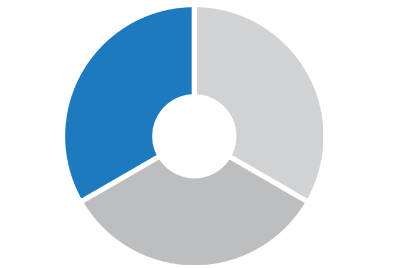Safe and affordable financial products are services offered at a reasonable price, with clear, upfront information about the product. These products can include checking and savings accounts, credit cards, lines of credit, and loans that insured banks or credit unions offer to individuals.
Households with lower incomes are more likely to be unbanked, meaning they do not have an account at a bank or credit union, or underbanked, meaning they use nonbank financial services, such as check cashing or payday loans, in order to get money for their day-to-day needs.
What is affordable will be different for every family. What is possible and desirable in financial products will also differ among families. For example, a family who has not used credit before may receive credit card offers with higher interest rates, but they may select one of these offers to begin building credit with a reputable bank. Another family may have a strong credit history and receive credit card offers with lower interest rates. Families will want to consider annual interest rates, fees, and other factors when determining the affordability of financial products.
Insured banks and credit unions offer safe and affordable financial products that are typically less costly than payday lenders and check cashers. Payday lenders and check cashers, however, offer greater convenience and faster access to cash — although at a much higher cost than products offered by insured banks or credit unions. These distinctions can also apply to tax preparers. Learn more about free tax preparation.
Ideas for Action
1. Learn more about safe and affordable financial products.
Staff can open conversations with families about what types of financial products they are curious about and help families compare different options.
Start the Conversation
- "What factors are most important to you in accessing your money?”
- “It sounds like you may be concerned about the interest rate on a payday loan. I’m familiar with some options that might have lower interest rates, would it be alright if I shared them with you?”
![]()
Resources for Families
- Comparing Financial Service Providers (worksheet)
- Finding Financial Products and Services (worksheet)
2. Open a checking or savings account.
Staff can help prepare families to open a checking or savings account at a bank or credit union. You can invite families into a conversation about the process of opening an account and any associated fees.
Start the Conversation
- " It’s so exciting to hear that you’ve been able to put money away each month, I know that goal was important to you. Would it be helpful to discuss banking options to store this money and gain interest?”
![]()
Resources for Families
- Opening a Checking or Savings Account (worksheet)
- Avoiding Checking Account Fees (worksheet)
3. Set up direct deposit for paychecks.
Staff can help families understand the benefits of various banking options. Families may be interested in using direct deposit. Direct deposit puts money from a paycheck, child support, benefits, or other sources directly into a person’s bank account. Direct deposit can be offered through an employer, benefit provider, or financial institution.
Start the Conversation
- "What is your strategy for allocating your money between your savings and checking account? Would you be interested in automating it?”
![]()
Resources for Families
- Choosing How to Get Paid (worksheet)

Refer
Connect families to banking options.
There are many options in your local community to refer families to safe and affordable banking options. Bank On is one option for families looking for financial products. Bank On has local coalitions throughout the nation, with the goal of connecting people to safe, affordable bank accounts. The Bank On National Advisory Board created rules for Bank On accounts to ensure that all consumers have access to a bank account without high fees or other barriers. Share information about Bank On and safe and affordable financial products with families in conversations, and in your program. Encourage parent leaders and family members to share information.
Bringing FEM to Your Program – Direct Deposit Options
Head Start programs can ensure that their own employees have the option to have their checks directly deposited into their bank accounts. Programs can encourage staff to place some amount in savings regularly.
Learn More with These Resources
- Partnering with Families to Open a Bank or Credit Union Account (article)
- Bank Accounts (resource collection)
- Get Banked (videos)
Last Updated: October 11, 2023
